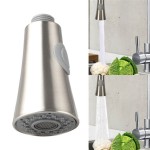The kitchen sink is one of the busiest and most used appliances in any home. A properly functioning kitchen sink and its accompanying hose is vital to any kitchen. Taking the time to understand the different types of kitchen sink hoses and how to properly install and maintain them can help extend their life and keep your kitchen running smoothly.
Types of Kitchen Sink Hoses
The two main types of kitchen sink hoses are braided and unbraided. Braided hoses are made from a woven material that is flexible and often has a stainless steel finish. Unbraided hoses are usually made from rubber and are generally more affordable than braided hoses. Both types of hoses can be found in a variety of lengths and sizes.
Installing a Kitchen Sink Hose
Installing a kitchen sink hose can be done by a professional or by a DIYer. If you choose to do it yourself, it is important to make sure you have the right tools and supplies. The supplies you’ll need include a new hose, a basin wrench, pliers, and a utility knife. It’s also important to make sure the connections are secure before you attach the new hose to the faucet.
Maintaining Kitchen Sink Hoses
Maintaining your kitchen sink hose is important for its longevity. You should clean the hose and its connections regularly, especially if you’re using a braided hose. You can use a mild detergent or vinegar and water to clean the hose. It’s also important to check for any leaks or signs of damage, and replace the hose as soon as you notice any issues.
Best Practices for Kitchen Sink Hoses
When it comes to kitchen sink hoses, it’s important to remember a few best practices. Make sure the hose is securely fastened to the faucet. Avoid kinking the hose when attaching it. Keep the hose and its connections clean. And be sure to check for any signs of wear or damage, and replace the hose as soon as you notice any issues.















Related Posts








